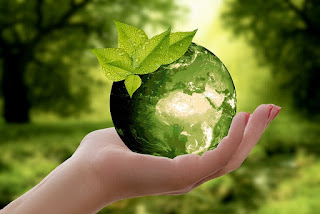
What is Net Zero?
In today's world, climate change is a pressing concern, and "Net Zero" is a term that's becoming increasingly common in conversations about sustainability. But what exactly does it mean? Let's break it down in simple terms.
Net Zero refers to the balance between the amount of greenhouse gases (like carbon dioxide) produced and the amount removed from the atmosphere. When a building, city, or even a country achieves Net Zero, it means they are not adding any extra greenhouse gases to the atmosphere. They are offsetting their emissions through various methods, such as planting trees, using renewable energy, or investing in technologies that capture and store carbon.
How is Net Zero Achieved?
Achieving Net Zero involves two main strategies: reducing emissions and offsetting emissions.
1. Reducing Emissions: This is about cutting down the amount of greenhouse gases we produce. Think about switching to renewable energy sources like solar or wind, using energy-efficient appliances, or improving insulation in buildings to reduce heating and cooling needs.
2. Offsetting Emissions: Even after reducing emissions, there might still be some left. To balance these out, we can use carbon offsets. This might include planting trees (which absorb carbon dioxide), investing in projects that reduce emissions elsewhere, or using technology to capture carbon from the air.
Real-Life Examples of Net Zero
Let’s look at some real-world examples of Net Zero in action:
- The Bullitt Center in Seattle, USA: Often referred to as the "greenest commercial building in the world," the Bullitt Center was designed to achieve Net Zero energy. It generates all the electricity it needs through solar panels and manages its water use in a sustainable way.
- Copenhagen, Denmark: The city has set a goal to become the first carbon-neutral capital by 2025. They’re working towards Net Zero by enhancing public transport, promoting cycling, and increasing the use of renewable energy sources.
- Costa Rica: This small country aims to achieve Net Zero by 2050. They are focusing on renewable energy, reforestation, and sustainable agriculture to reach their goal.
Net Zero in Our Self-Sustainable City
In our self-sustainable city project, the concept of Net Zero plays a crucial role. By integrating renewable energy systems, like solar panels and wind turbines, we're reducing our carbon footprint. We also focus on sustainable building practices, such as using materials with low embodied carbon and designing homes to be energy-efficient. Additionally, we are committed to offsetting any remaining emissions through natural methods like tree planting and maintaining green spaces.
The impact of achieving Net Zero in our community is significant. It helps combat climate change, reduces energy costs for residents, and creates a healthier environment for everyone. We’re not just building homes; we’re creating a sustainable future.
Join the Conversation
What are your thoughts on Net Zero? Do you think it’s achievable on a larger scale? Share your thoughts or questions in the comments below—we’d love to hear from you!
![Self-Sustainable City - Ramakrishna Surathu [Official Website]](https://blogger.googleusercontent.com/img/a/AVvXsEivh2bAyNCG-DxYf4p_lHLcFQx1i8MvbBv91UgzKqAFrNMhT8xW-fwxgNJTdtojgb9aYXiG9EdNYLo8tNmtaakyq-zmnaCeeUGMdpvJ8iOaVzd2tSKEC2UrUXzFJa952LPF-OngfPenpbFOj7b8AcbYtPGSng6xbGr-_NwEIRpXZg_QdKLGRMGeg5pWmtaQ=s1280)
No comments:
Post a Comment